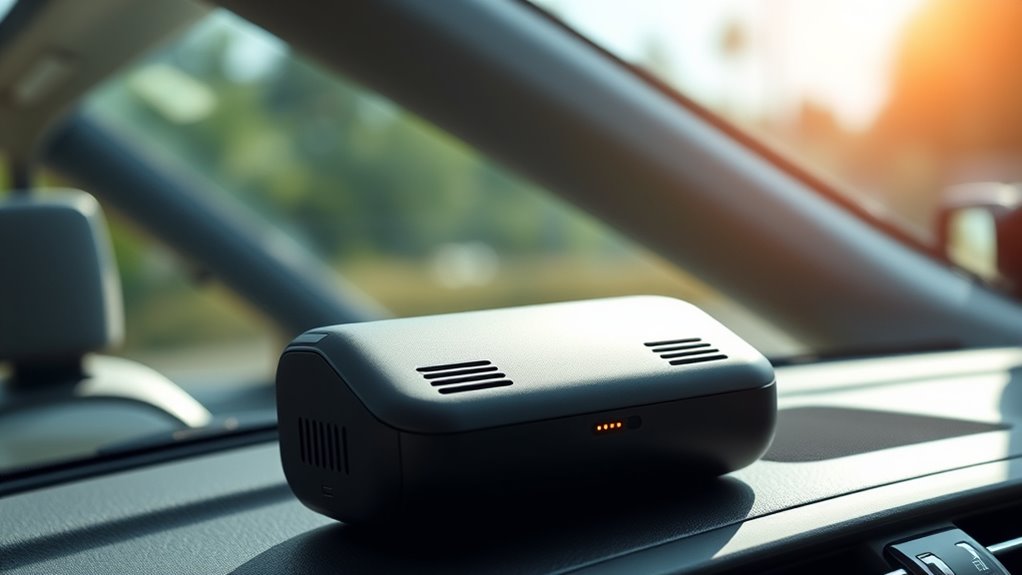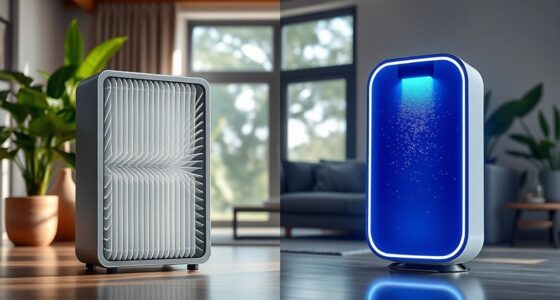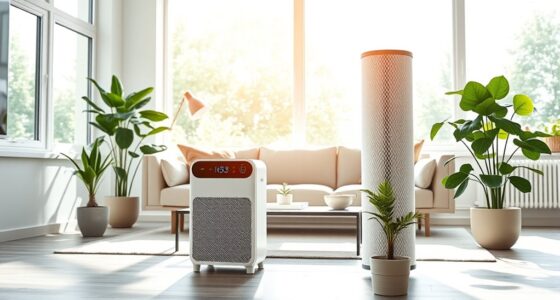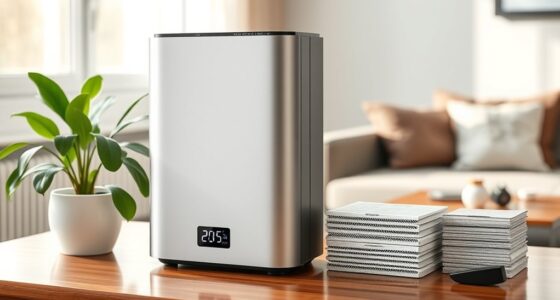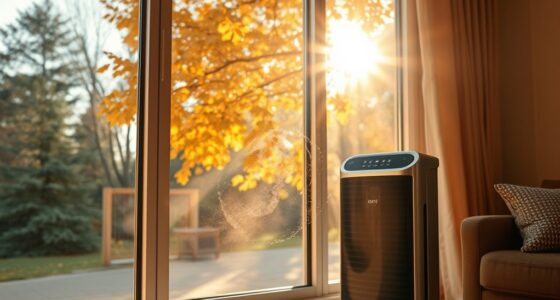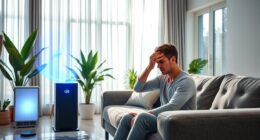Yes, portable air purifiers can be effective in cars when you use them correctly. They help reduce pollutants, allergens, and bacteria, especially if the filters are well-maintained and you position them properly for ideal airflow. Keep an eye on real-time air quality indicators to guarantee everything works smoothly. When you follow these tips, you can greatly improve your vehicle’s air quality. Stay with us to discover how to get the most out of your purifier.
Key Takeaways
- Proper maintenance and filter replacement are essential for portable purifiers to effectively clean car air.
- Correct placement within the vehicle ensures optimal air circulation and purifier performance.
- Air quality indicators help monitor pollution levels, confirming purifier effectiveness during use.
- Portable purifiers can significantly reduce pollutants, allergens, and bacteria in vehicle interiors.
- Superficial cleaning methods like dashboard wipes do not replace the need for active air purification.

Have you ever considered how clean the air inside your car really is? Many people assume that a quick wipe of the dashboard or regular vacuuming keeps the air fresh, but the truth is, the air can harbor pollutants, allergens, and even bacteria. That’s where portable air purifiers come into play. These compact devices are designed to improve air quality on the go, but their effectiveness depends on several factors, including proper air purifier maintenance and your ability to interpret air quality indicators.
Many assume quick cleaning keeps car air fresh, but pollutants and bacteria can still linger.
When you invest in a portable air purifier for your car, it’s essential to stay on top of air purifier maintenance. Regularly replacing filters is vital because clogged or dirty filters won’t effectively trap pollutants. Check the manufacturer’s guidelines for how often to change or clean filters, and don’t delay this step—otherwise, the purifier may become a source of contaminated air rather than a solution. Additionally, some models have indicator lights that alert you when maintenance is needed, so pay attention to these signals to guarantee your device functions at its best.
Understanding air quality indicators is another key aspect of using a portable air purifier effectively. Many devices come equipped with sensors that monitor the air in real-time, providing you with instant feedback on pollutant levels, VOCs, or allergens in your car. When these indicators show elevated levels, it’s a clear sign that your purifier is doing its job, but it also signals that you may need to take additional steps—like increasing ventilation or cleaning out sources of pollution. Conversely, when the air quality indicators show clean air, you can be more confident that your environment is safe, especially during long drives or when you’re parked in areas with high pollution. Proper placement of the purifier also plays a crucial role in maximizing its effectiveness, ensuring that the filtered air reaches all corners of your vehicle.
Frequently Asked Questions
Do Portable Air Purifiers Eliminate All Types of Car Pollutants?
Portable air purifiers can reduce many car pollutants, but they don’t eliminate all types. They are effective against common allergens like car pollen and pet dander, helping improve air quality. However, they might not fully remove smoke, exhaust fumes, or volatile organic compounds (VOCs). To maximize benefits, choose a purifier with a HEPA filter, and regularly maintain it. Keep windows closed while driving for best results.
How Often Should I Replace Filters in a Car Air Purifier?
You should check your car air purifier’s filter lifespan regularly, as replacement frequency depends on usage and air quality. Typically, filters need changing every 3 to 6 months, but if you notice reduced airflow or persistent odors, replace sooner. Following the manufacturer’s guidelines helps maintain peak performance. Keeping up with filter replacements ensures your purifier effectively reduces pollutants and keeps your car’s air fresh.
Can Portable Air Purifiers Reduce Odors Inside the Vehicle?
You can definitely reduce car odor with portable air purifiers, as they filter out particles and odors, improving air quality. These devices work well for air freshening, neutralizing smoke, pet smells, or food scents inside your vehicle. Keep the purifier running regularly, and consider using activated carbon filters for better odor absorption. By doing so, you create a fresher, more pleasant environment, making every drive more enjoyable.
Are Portable Air Purifiers Safe to Use While Driving?
Your concern about portable air purifiers and driver distraction is valid, but these devices are generally safe to use while driving. They’re designed to be compact and unobtrusive, minimizing any risk to device safety or your focus. Just make certain the purifier doesn’t divert your attention or block essential controls. When used responsibly, it’s like having a gust of fresh air in your car without compromising safety or causing driver distraction.
Do Car Air Purifiers Consume Significant Battery Power?
Car air purifiers typically have low battery consumption, making them power-efficient for use during drives. You won’t need to worry about draining your vehicle’s battery markedly, as most models are designed to operate with minimal power. If you choose a device with good power efficiency, it can run comfortably without impacting your car’s electrical system, ensuring clean air without sacrificing energy or performance.
Conclusion
So, if you’re wondering whether a portable air purifier can really improve your car’s air quality, the answer is yes. Studies show that air purifiers can reduce airborne pollutants by up to 99%, making your drive safer and fresher. Imagine driving through a city with pollution levels that are nearly halved just by using a small device in your car. It’s a simple step that can make a big difference in your daily commute.
